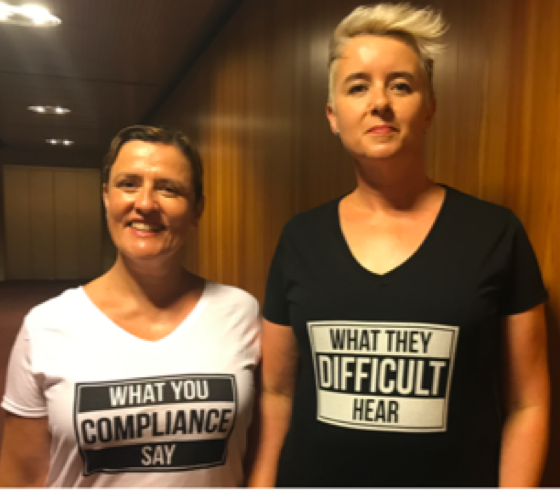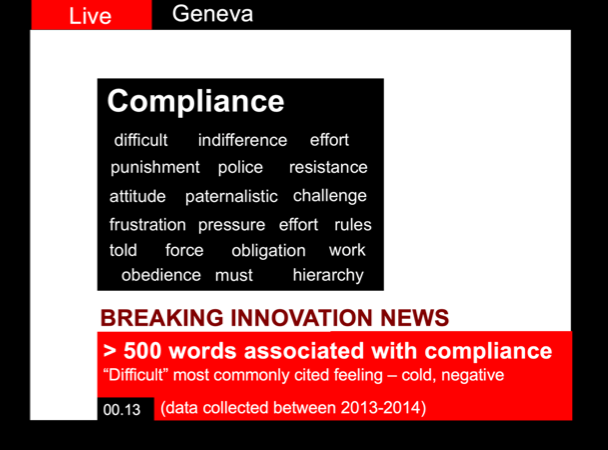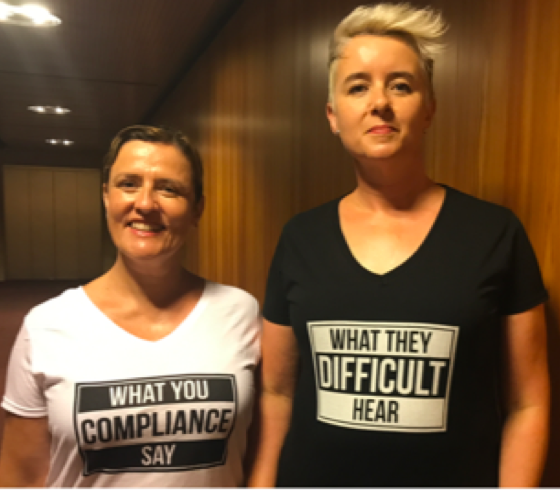By Claire Kilpatrick

“Words can be like X-rays if you use them properly – they’ll go through anything.”
Aldous Huxley, Brave New World
Numerous studies have focused on health care workers’ knowledge and perceptions of hand hygiene but few have addressed the words we use to influence hand hygiene behaviour.
If one were to categorize the nomenclature of hand hygiene across the late 20th and early 21st century there would be broad agreement that many of the words used fall within a medical model of health. The conceptual basis for this lies in the world of microbiology and medicine with an emphasis on Latinate terms and words, as outlined in a recent paper. The World Health Organization (WHO) Guidelines on Hand Hygiene in Healthcare reflect this, alongside almost every other guideline produced by national organizations, academia and individual healthcare institutions. Whilst there is currently no official taxonomy of hand hygiene, there exists an accepted way of talking about it that displays little variation. Many of the words and terms used in association with hand hygiene improvement are loaded with technical meaning, but many also have meaning outside of a health care context and it is that dual meaning that can impact on what the audience hears when hand hygiene is communicated through guidelines, training, audit and feedback, advocacy and awareness raising.
The WHO Guidelines use the word “language” nine times, and only once in relation to the choice of words, emphasizing “Clear and uniform language in hand hygiene matters”. Jump forward 15 years and the recently published WHO Research agenda for hand hygiene in healthcare, 2023-2030, based on expert consensus, lists the highest hand hygiene research priorities according to six thematic domains. The “communication and reminders” domain includes a research priority to “determine the influence of message framing and use of language within hand hygiene campaigns across different cultures, contexts and cadres of the health workforce (including leaders) on health workers’ hand hygiene behaviours”. This is testimony to the increasing application of social marketing in infection prevention and control efforts and underscores the value of communication in campaigning for change. Given that the research agenda will take many years to trickle down into actual research, in order to guide best practice, it seems prudent to delve deeper into some of these issues now, some of the history, and what influence today’s approaches might be having on infection prevention improvement.
WHO’s multimodal improvement strategy for hand hygiene, launched in 2009, includes the element of reminders and communication, which can be summarised as “sell it”, asking how are infection preventionists promoting messages that reinforce the right action to health workers and patients. Much of the focus on language was driven by Huis et al in 2012, who explored the content and effectiveness of a range of strategies to improve hand hygiene adherence using a detailed coding taxonomy of behaviour change techniques, targeting behavioural determinants. This work shed interesting light on the frequently used improvement strategies and how they work. Their findings reinforced that combinations of different determinants give better results, suggesting a need for more creativity in the application of improvement activities, potentially including the language we use. Those working on antimicrobial resistance have also focused on language, including a report from the Wellcome trust and an article in Nature by Mendelson et al. From other related fields, research has yielded powerful insights into how the brain mediates behaviour, focused on mapping the semantic system (i.e. the meaning of language) within the brain.
Hand hygiene – coffee test!
A few years ago together with Jules Storr, we explored the possible influence of language and particularly, specific words used for hand hygiene. At the ICPIC congress in Geneva, we were delighted to be shortlisted for the prestigious Innovation Academy Hubert Tuor Prize in 2017, eventually coming second.

The award was based on an exploratory exercise we undertook using the following approach, and was inspired by conversations with Martin and Martha Shovel at CreativityWorks:
- We assessed the feelings evoked by five words commonly used in a hand hygiene context. A psychology experiment (the ‘coffee test’) was used to evoke an instant, emotional reaction from the study sample.
- The words tested were 1) alcohol based handrub, 2) compliance, 3) monitoring, 4) moment and 5) system. Qualitative analysis of the findings was undertaken.
- A total of 23 face to face exercises were undertaken in seven different countries. This convenience sample totalled over 2000 people consisting of nurses, doctors, senior management and a diverse range of other health workers and managers.
- Responses i.e. the words captured during the exercises, were categorized as “warm” and “cold”.
- During the exercises 240 words representing alcohol based handrub were collected, 510 representing compliance, 402 representing monitoring, 480 representing moment and 200 representing system.
- Compliance in particular evoked negative feelings, with ‘cold words’ (Figure 2) being described as the instant “feeling” on hearing this word in the majority of respondents. The word moment evoked the most positive feelings (‘warm words’) including ‘now’, ‘special’ and ‘crucial’.
Interesting results! The influential historian Walter Ong explained it like this:
“Many of the features we have taken for granted in thought and expression in literature, philosophy and science, and even in oral discourse among literates, are not directly native to human existence as such but have come into being because of the resources which the technology of writing makes available to human consciousness.”
Our novel exercise ignited a conversation highlighting the potential to stimulate infection prevention communities to revisit the words used within policies and guidelines, day-to-day communications, training, audit and feedback, etc., in their quest to bring about the desired behaviour change [hand hygiene at the right time] as a part of a multimodal improvement strategy.
It is also now 30 years since Kretzer and Larson challenged the use of the word compliance in an infection prevention and control context and suggested alternatives. And 10 years since Mark Cole examined the discourse of hand hygiene policies across 359 NHS Trusts in England and considered the implications for practice, including the words used.
In 2025 we believe this is still relevant and call upon the infection prevention community to think about this again.
Which mode of feedback do you think is most powerful in influencing behaviour, what language do you think targets and influences health workers and others when protecting themselves and patients from infections? How will you improve your situation?
